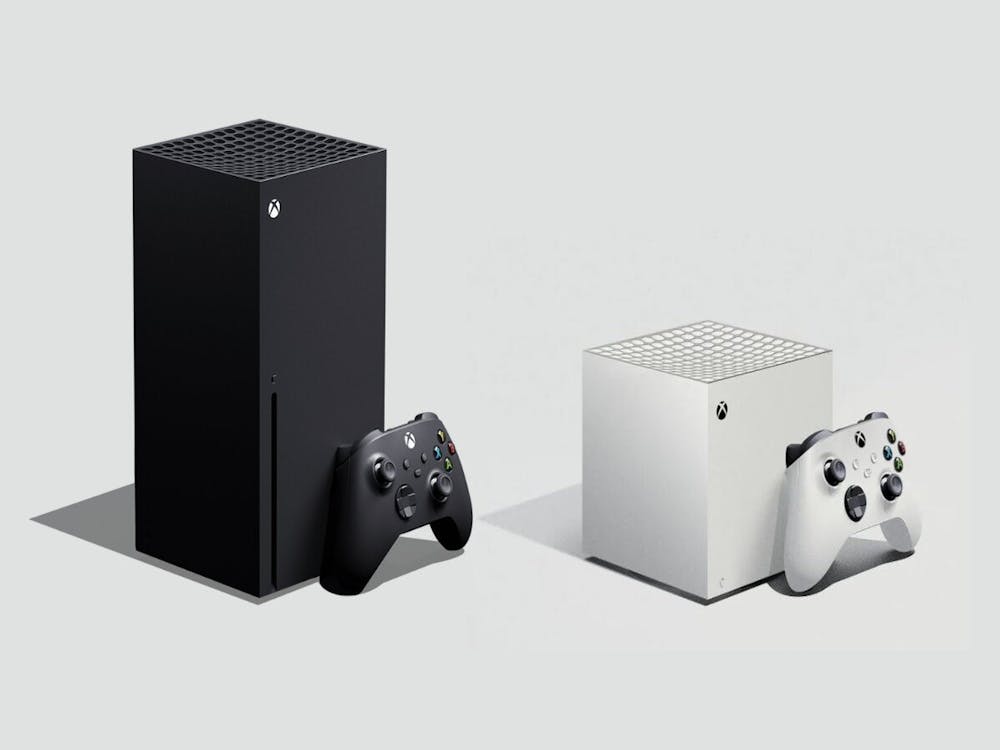After years of speculation and anticipation, the next generation of video game consoles is finally here. If you could get your hands on one, which one should it be?
Just in time for the holidays, Microsoft and Sony have released their new gaming consoles, a signal of the previous generation’s successful end. While the Xbox One X and Playstation 4 are ingenious devices that set the stage for high definition and performance in a console, the new machines aim to be a technological leap on par with PC gaming that we haven’t quite seen before. Here’s an inside look at both companies’ take on next-generation consoles and which one is better for your gaming preferences.
Microsoft entered this console generation by announcing two consoles at different price points — the Xbox Series X and Xbox Series S. The Series X is a massive, PC look-alike tower that requires more space than previous generations, so it may require reconfiguring one’s entertainment setup.
The Series S is less expensive and much smaller. In fact, it’s the smallest console Xbox has ever produced. For a gaming system of the future, it’s a surprise how tiny it is. It can easily be placed behind your TV, and because the console exclusively plays digital games, you would never have to access it again.
Both Xbox consoles shine when it comes to performance. The most noticeable upgrade from the last generation of consoles is loading speed, which was an enticing selling point in the months preceding launch day. Both versions are capable of hitting up to 120 frames-per-second for a smoother gaming experience, and players can expect a noticeable difference for backward-compatible games’ graphics, performance and overall playability.
If there is a problem with these consoles, it’s that they still contain too little storage. The Xbox Series X has a 1TB storage drive while the Series S has only 512GB. Game sizes are growing larger each year, and expensive external storage may soon become a necessity. This may force players to keep only a few of their favorite titles downloaded at one time or to invest in expensive external storage devices.
As for Sony, they start this new era as winners of the last console generation — the PlayStation 4 was one of the best-selling consoles of all time — and they’re looking to build upon their success with the aptly named PlayStation 5.
Massive doesn’t begin to describe the PS5. It’s one of the largest video game consoles ever built and will likely require even more careful planning when trying to fit it into your entertainment setup. It has an extremely wild look, and while it may be an acquired taste, I can admire Sony’s bold take on futuristic design.
The PS5 is much more powerful than its predecessor. With 120 frames-per-second, 4K resolution and fast load times, it is almost on par with the Series X. New games, like the much-anticipated “Spiderman: Miles Morales,” take only seconds to boot up, and spending less time waiting for the game to load and more time web-swinging across New York City will surely entice gamers to make the upgrade to PS5.
However, storage is also an issue for the PS5, with only 825GB on the system. That’s even less storage space than the Series X. After downloading a few games, you may have to either start uninstalling titles or reluctantly spend more money on storage.
Both consoles have their perks in terms of performance, but price and access to exclusive games are where consoles sell. For the Series X and S, power makes the difference. The Series X is designed to make games look as good as possible and perform faster than what most players expect out of this new generation. At $200 cheaper, the Xbox series S may appeal to a wider audience of players who don’t have the accessories to make use of the graphic upgrades of the series X.
The Xbox Series doesn’t have many exclusive games yet, especially since they delayed the release of their console-seller game, “Halo Infinite,” to 2021. An attractive selling point, however, is the Xbox Game Pass subscription service, where players can pay $10 a month for access to a catalogue of excellent current and last-generation games.
The PS5 has a leg-up on its closest competitor with “Spiderman: Miles Morales,” an exclusive that is sure to be a bestseller. PS5 comes in two different versions: one with a disc drive at $500 and one that is all digital at $400. The digital version, similar to Series S, will likely serve players unconcerned about physical media and looking to cut costs, though it’s worth noting the PS5 all-digital version performs the same as its physical counterpart.
From exclusives to Netflix-style game subscriptions, Xbox and PlayStation offer different ways to consume games and media in the form of large, clunky powerhouses and cheaper, all-digital alternatives. At the end of the day, this console generation is the next step toward a more immersive experience with games. While it may not be the significant technological advancement players expect, it is sure to offer a wide variety of gamers with exciting visuals, impressive speed and a number of other much-welcomed features to keep many satisfied for the foreseeable future.
Get The Chronicle straight to your inbox
Sign up for our weekly newsletter. Cancel at any time.

